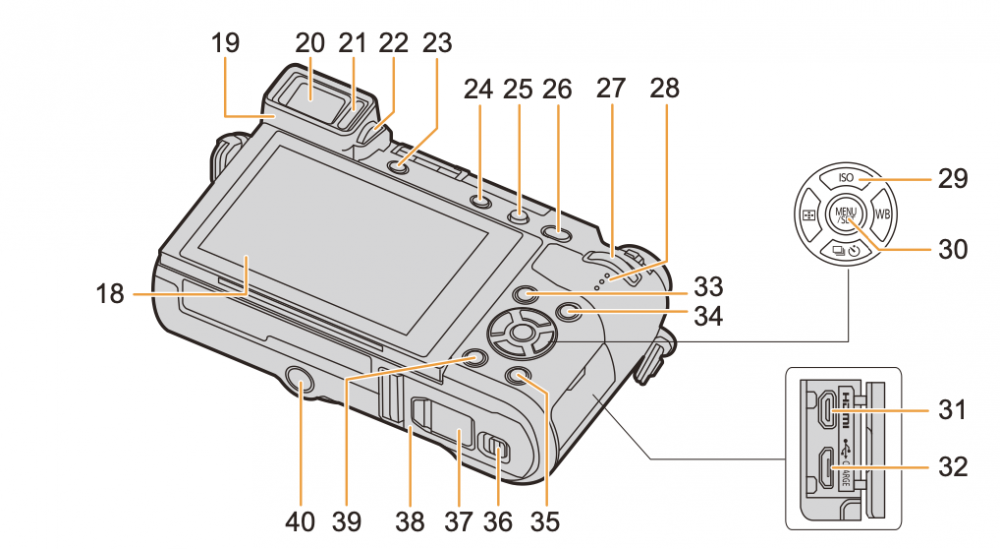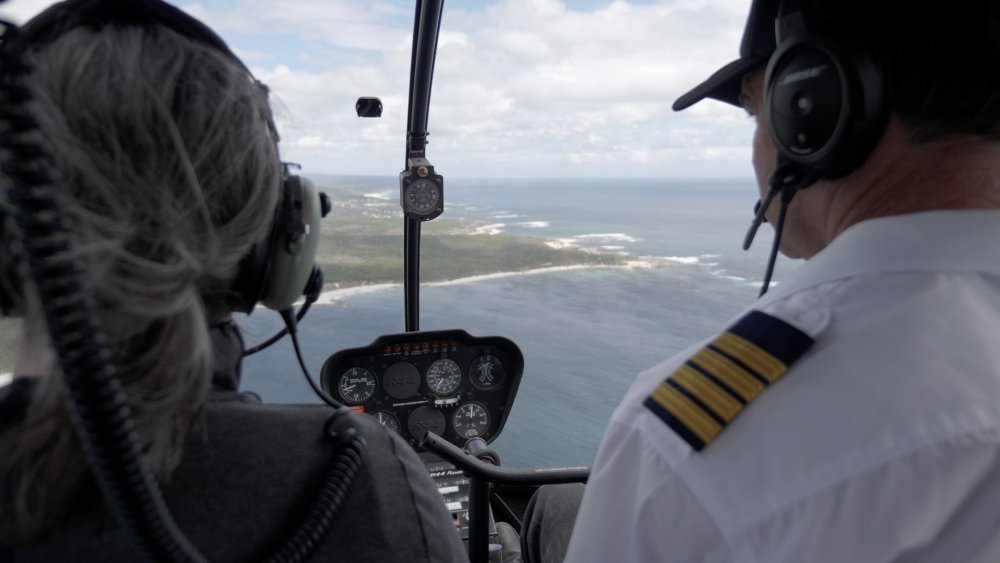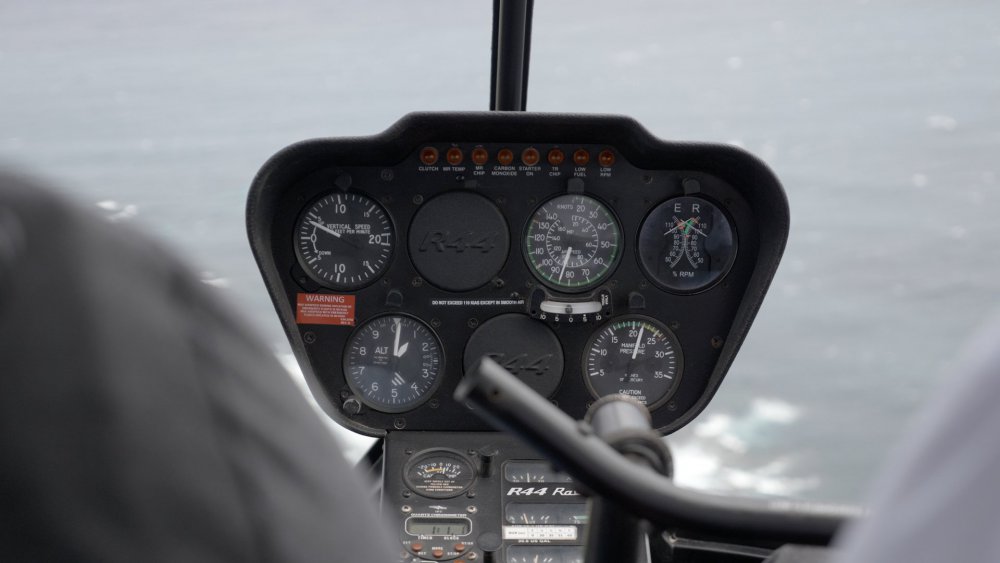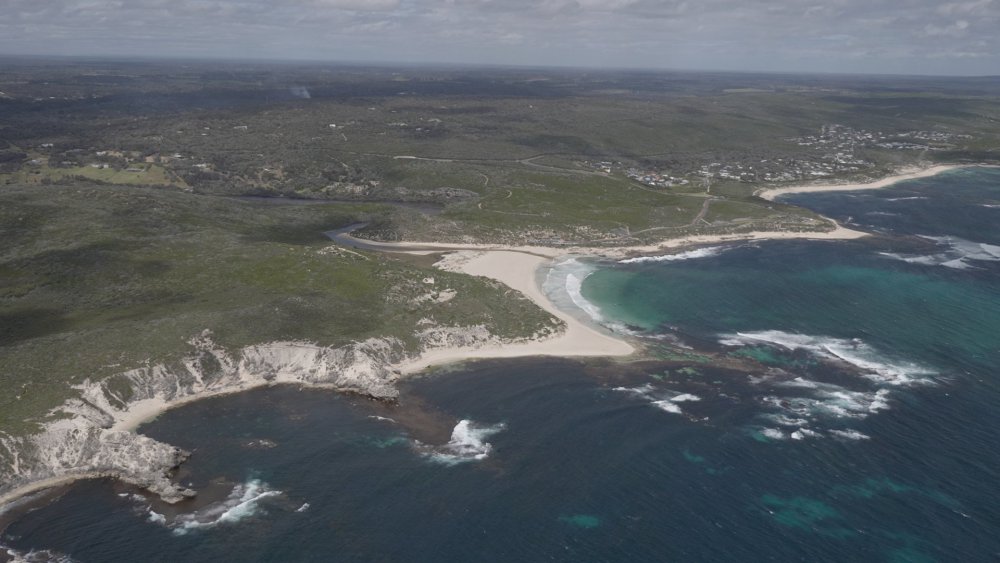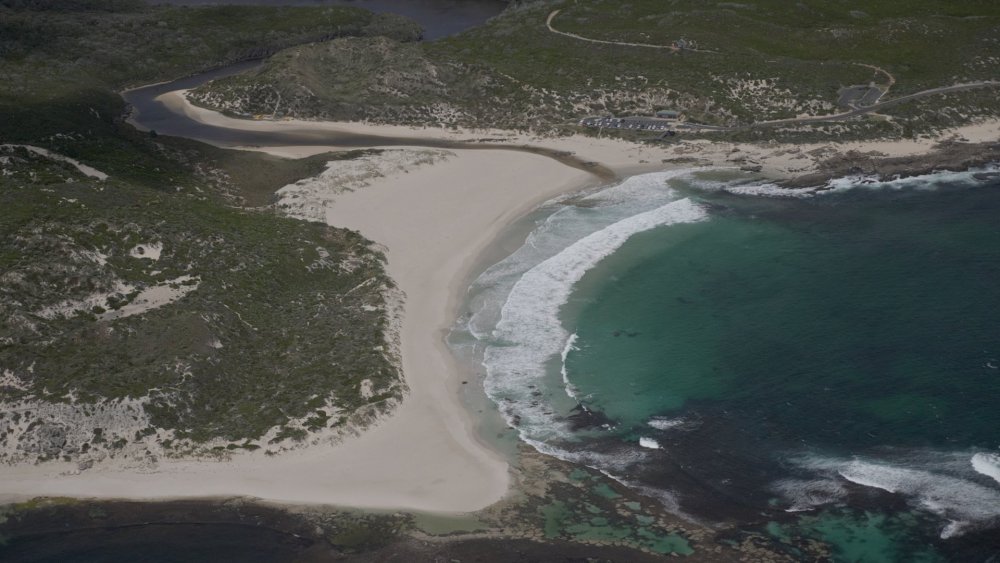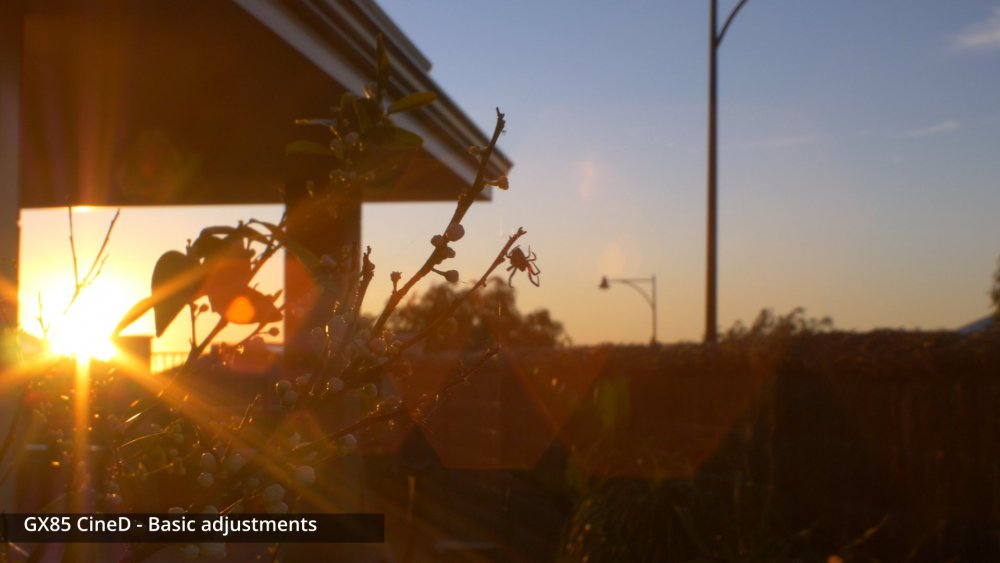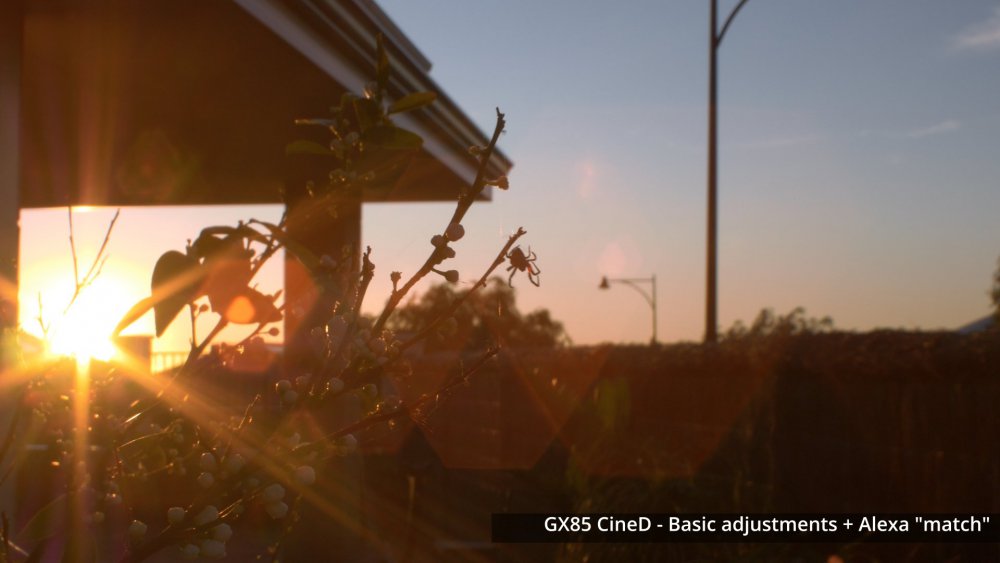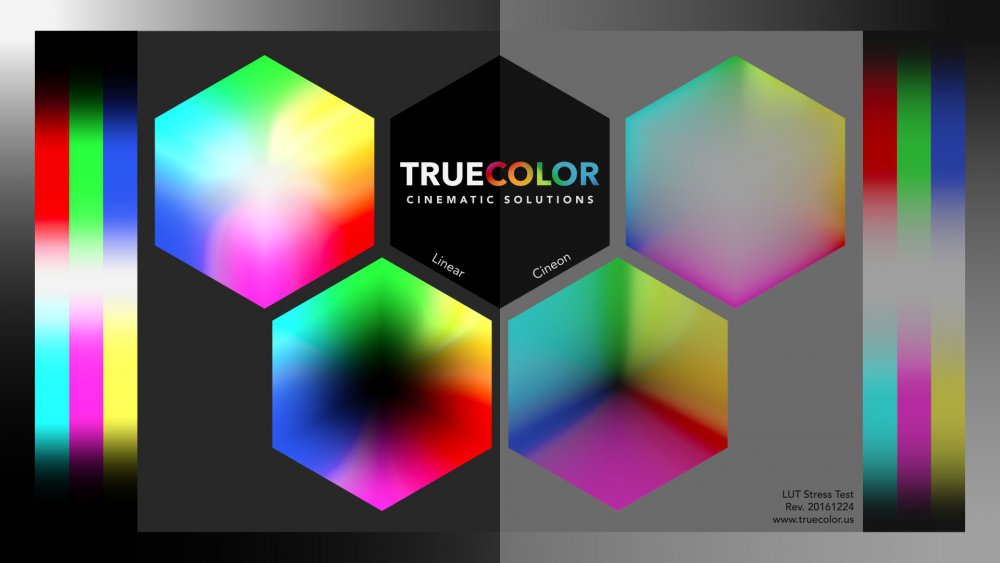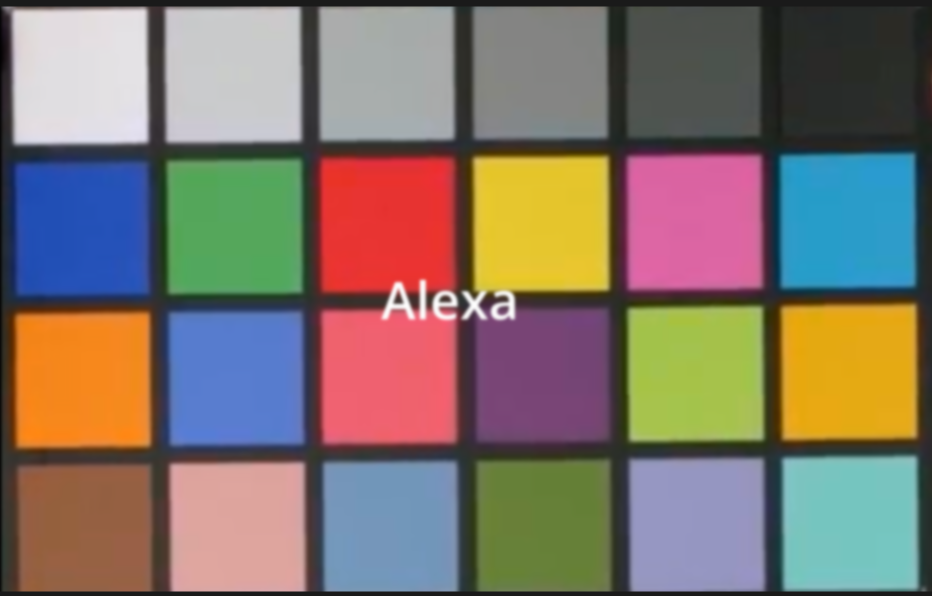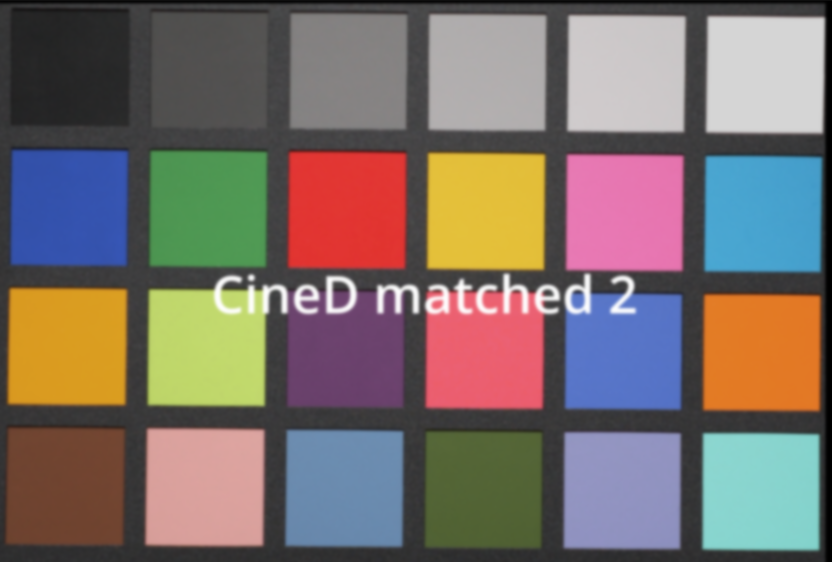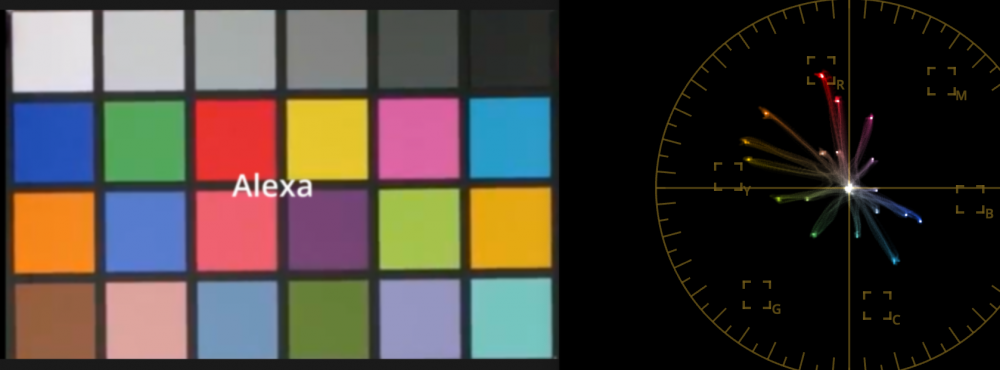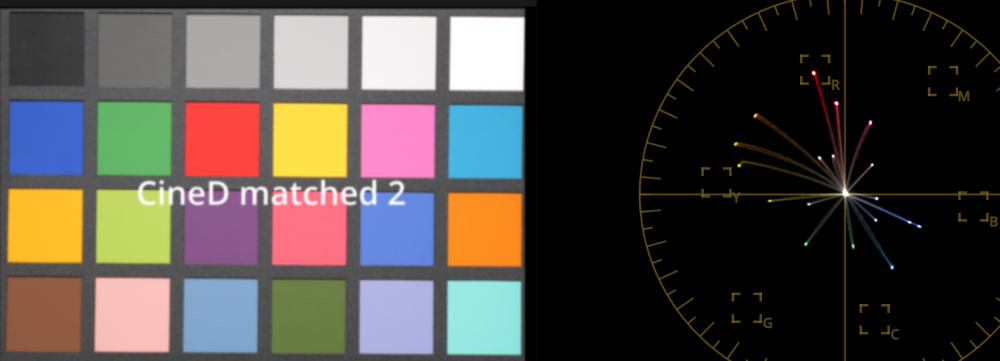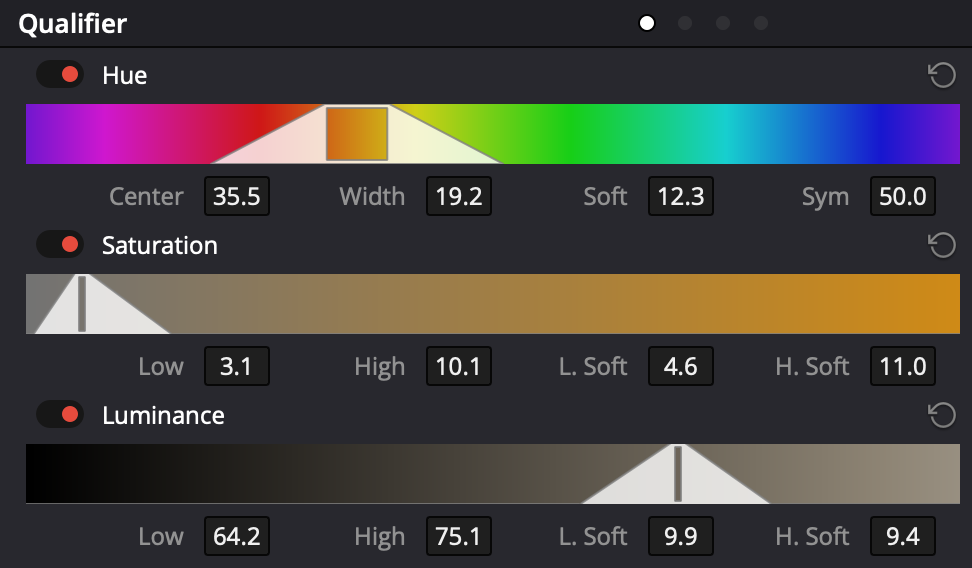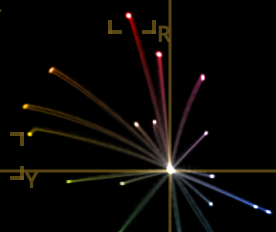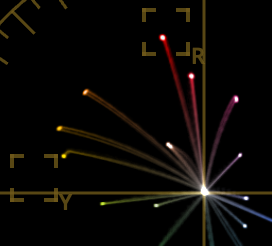-
Posts
7,835 -
Joined
-
Last visited
Content Type
Profiles
Forums
Articles
Everything posted by kye
-
Does anyone have any tips for securely mounting the GX85 to a tripod? The screw is right at the front of the body, and if I put a tripod plate with a thin rubberised layer on it, the plate just tips up and the plate doesn't get tight, so the camera can rotate loose on the screw. From the manual, the screw is #40: I'd really like to use it with my Peak Design Camera Clip, but that requires a strong mount for the camera. Thanks!
-
Since my last post in this thread, I now own the Speed Editor for Resolve and am loving it. My earlier statement proved to be correct - the critical feature is the scroll wheel. However, I think there are three main reasons to consider a control surface, depending on what you're doing and what NLE you have. Navigating using the scroll wheel The scroll wheel is super intuitive to use when editing, and for this purpose I think the ergonomics are important. The Speed Editor (BMSE) wheel is heavy and has momentum, so I find that I use it a lot by flicking it and having it spin on its own accord. This means that you can have almost frame-level accuracy and yet be able to quickly navigate the timeline at the same time. A wheel that was just a clicky-control would be far less useful in this sense I think. Editing using the scroll wheel Probably the killer feature of the SE is the ability to hold down a button (eg, to control the out point of a clip) and move the wheel to adjust it. The SE allows you to control in points, out points, allows you to slip clips, to roll edit points, etc, all by holing down a button and scrolling using the wheel. It also has other things like being able to control the size of the viewing window, once again, by holding it down and using the wheel to adjust it. This method of working is super intuitive and a really slick feature. Editing using the buttons The SE has buttons that access functions that you can't map to keyboard keys. This is a bit of a cheat from BM, but its there, so isn't to be discounted. I would evaluate your options above based on those criteria, as they're the ones that really provide the value of a control surface, in my experience.
-
Great stuff! Lots of attention to detail here, and great casting on the "Walter" actor!! Thanks for posting, I really enjoyed it 🙂
-
Kind of, as it'll meet some but not all of the criteria I laid out in the first few posts, but it's pretty darned expensive and so doesn't really require any "help" in being recognised for its strengths and advantages. Of course, lenses are lenses and everything from the $10 lenses on eBay to the $100,000 lenses you can only rent but not buy still obey the laws of physics, operate under the same principles, and suffer from the same aberrations (to a greater or lesser extent). LOL.. there's a trap for new players! Another win for kit lenses - they always have coverage of the camera they're supplied with!!
-
I'm not optimistic about a Chinese company creating a Prores recorder. For a start, Prores is licensed, and secondly, the collective "wisdom" (ie, mass delusion) is that the h256 and RAW codecs are the future and that Prores is the past and is no good. Thirdly, one of the advantages of Prores was that it was a great intermediate codec for editing, but now computers are getting more powerful and so that's less of a concern for things like 4K footage, which the new Macs will eat for breakfast before they've even woken up. I also like the screen on the GX85, the tilting arrangement is the same as on the XC10, which has some of the nicest ergonomics in any camera ever made I suspect. It's great for shooting, but less good for selfies, obviously. I'm curious to hear about how these lenses pair with PDAF, although I suspect that they'll be brilliant. The focusing speed of these is some of the fastest available, and paired with a camera that can reliably direct it that should be a winning combination. Great stuff! Both the music and the visuals.. I've written electronic music on and off since 1992 and appreciate the mix. In terms of the visuals, I'd suggest watching your WB - in some shots the prevalence of green had pushed the neutral colour of the tree trunks towards magenta. However, instead of correcting that, I'd suggest actually going the other way and accentuating it. The music suggests a very "other worldly" feel, and it paired wonderfully with a couple of slightly abstract shots (I'm thinking particularly of the shots taken down low with the flowers in silhouette and the town in the background slightly overexposed). This use of overexposure and pushing the colour balance slightly off is used frequently in movies for places with harsh conditions like deserts or when the sun is too strong etc. The Chronicles of Riddick comes to mind. Also, it looks like you shifted to another more vintage lens when the light was getting lower? or you opened up the aperture, revealing more character. That also lends itself to the altered state vibe too. You could even experiment with blurring the edges of the frame slightly and creating your own slight vintage feel. Keep it up and don't be afraid to push the envelope!
-
Thanks - that's a really interesting looking package, as it includes things like RS correction and various other issues that modern cameras face. Mocha is another package that might be useful too, but wow, are these things all really expensive! Still, buying one of these would upgrade all my previous footage as well as future stuff, so from that point of view it might be worth it. More research required...
-
Indeed! I am most definitely a videographer, shooting the travels of my family and friends. I sometimes contemplate about the middle ground between the two. That's where most of the action of the DSLR revolution has been. Personally, I've been trying to learn how more about the artistic elements of film-making so that I can improve my own work, but because I don't follow the normal production process, and because there doesn't seem to be the depth of knowledge associated with videography, I've been struggling trying to find resources for such things. I suspect that I might have to read and watch things aimed squarely at the traditional route, and just cherry pick the parts that are useful to me and throw the vast majority of it away as it doesn't apply. I'm still searching, but I suspect that the people that really do understand the things I want to know are out there doing it rather than explaining it to others outside the industry.
-
While the lines between videography and cinematography are continuing to blur, there are a number of aspects where the two differ greatly. AF being one, and resolution being another. The responses on almost all Internet forums quickly reveal that the membership are videographers, not cinematographers. This makes sense, as the sheer quantity of video content (social media, weddings, corporates, marketing, most of TV productions, etc) overwhelms the amount of content created for cinematic release, probably by a factor of thousands or millions to one.
-
A few weeks ago I took a scenic helicopter flight, and naturally I took the opportunity to shoot it as best I could, sitting in the back and shooting out of the open door. As I was limited to hand-holding and knew that getting stable shots at 200kph / 120mph with the door wide open was going to be a huge challenge I used my Sony X3000 action camera (which has impressive OIS) and the GH5 + 12-35mm f2.8 combo for the dual-IS. The GH5 worked really well, benefitting from the three points of contact (two hands and face while using EVF) and being shot from within the aircraft..... .....but the X3000 didn't fare nearly as well. Due to its very wide angle lens, I held it further out the door (to avoid getting the doorway in shot) and limited to only two points of contact (two hands), where it was buffeted by the wind much more (in a rolling motion as I was holding it from below). As such, I have footage that is very shaky. Normal stabilisation in Resolve works to eliminate the shaking, but the edges of the frame wobble around like a sheet of plexiglass in the wind. I tried applying lens correction before stabilisation, which helped, but the footage is still pretty wobbly. I'm sure there are pieces of software out there that can do this. I don't know if I can afford them, but I'm sure they're out there. Does anyone know of anything or can anyone recommend anything? I probably should have asked before the recent sales, but didn't get to this point in the edit until now. TIA... and here are some shots (ungraded), just to make my request slightly more interesting 🙂 The X3000 is great at getting wide scenery shots: The GH5 could then be used for detail shots: X3000 wide: GH5 detail: The combo works really well, and actually the X3000 did great, but most of the movement was in rotation of the camera, which OIS can't really help with, and holding it out the door of a fast-moving aircraft was probably outside its design brief!!
-
Thanks, and yes, I had figured out the battery similarities - what a happy surprise! IIRC I got a genuine battery with the GF3 and two third-party ones, which died a long time ago I think and are now gone, but to my surprise the genuine one still goes strong and so is enjoying renewed use. Of course, I've been playing with the GF3 from time to time as well, so it's not like it was gathering dust. I will have a look through that thread, thanks for pointing it out. Have you investigated using an external recorder with the GX85? If so, how did it go? I would imagine that you're already aware of this, so this is more of a PSA than a reply as such. It's always good to test resolution and lens characteristics by shooting RAW stills, as well as in every codec you intend to shoot with the camera, plus the post-processing you are likely to do. This is because although a RAW still might reveal a softness to a lens, that might not be visible using the cameras 4K mode which might downscale the image, or the 1080p mode if you use that, and of course the NR / sharpening / processing / compression will obscure considerable fine detail or softness as well. I also suggest that you grade the test clips, render a timeline in your normal delivery format, and if you self-publish (eg, streaming platforms) then upload the output for that site to re-compress your footage as well. Then view it sitting at a normal distance in a slightly darkened environment and see what is visible then. Literally no-one has ever said "I spent the extra $2K getting the top-end glass and even though the difference is completely obscured by YouTube compression so none of my viewers will ever be able to tell the difference I still think it was completely worth it"!
-
Great stuff! I'm especially heartened to hear you're not in a hurry and will rent equipment before you buy. I've used the Manfrotto Xume magnetic adapters before and they make working with filters really convenient, so I'd suggest that a system based on magnetic attachment is likely to be a positive experience that you'll really enjoy and benefit from.
-
LOL. There are always people that only take photos of brick walls ready to pounce with bad reviews on things they don't understand! "The A7S3 is a terrible product because it easily breaks when I'm pounding in nails with it to extend my house. I prefer a $5 hammer. Sony are idiots!!" -- Typical internet moron The challenge with photo lenses is that the internet is full of pixel-peeing photographers, and now is also full of pixel-peeing videographers, who have very different needs and priorities to those of us who are interested in cinema, rather than prints.
-
@Matt James Smith ? I have several pieces of advice.. they're a little controversial, but well intended. Firstly, don't believe ANYONE on the internet, even me, when discussing "quality". Only trust your own ears by listening to samples taken by competent people in real situations similar to what you will do. I produced music as a hobby for over a decade, and have been into hifi ($250k+ systems) for over two decades and made a lot of components from scratch (DACs, preamps, amps, speakers, acoustic treatments, etc), so I have a solid basis in the technical aspects of what is going on as well as understanding theory vs practice vs snake oil vs psychoacoustics. I went through a phase of researching microphones and while I watched/listened to dozens of video "reviews" of various products, I didn't find a single review where the person understood even the first thing about audio, or what is important. Secondly, don't confuse audio quality with audio frequency response. This seems to be a common thing with "reviewers". They compare two microphones, they like the EQ on one better than the other, and declare that the quality is better on that one. This is bullshit. EQ is so easily adjusted in post that it's practically a non factor. Judging the sound from a mic without processing it is like saying the iPhone has better quality than an Alexa because the Alexa footage looked all grey and dull-looking. Understand what matters for your context. If you are making recordings that will be used within a larger mix, processed, and will only form the background to a visually driven piece then obviously you won't need (or be able to appreciate) as much quality as if you are producing nature videos with long sections of straight binaural audio. Best of luck!
-
Damn - those are great looking shots! Thanks for the feedback on the 12-60/2.8-4. The reviews and sample footage were all quite positive too. One of the main drivers for buying my 12-35/2.8 was as a walk-around lens for the P2K (OG BMPCC), but I've since worked out that the screen is polarised the wrong way for my sunglasses, making it completely black, so the idea of that as a tiny setup has fallen flat. Now I have the GX85 for the tiny setup I'll likely sell the P2K but might keep the Micro, I'll see. I think those kind of shots, walking from one place to another, is really the challenge for AWB. If that shot was critical then it's likely to be salvageable, but it would probably take real work. It might be worth saying explicitly just for the record, I'm not a fan of AWB or manual WB, they're just settings that each have an application, and each definitely have their pros and cons which should be understood to get the best results. I can only speak from my experience, but everyones is likely to be different. I'm also definitely an amateur and remembering everything while out shooting is a real challenge - there are so many things to think about simultaneously. Part of the reason that on commercial sets there are so many crew! Nice. That lens actually has quite a nice balance between modern and vintage characteristics. Plus it's so darn small!
-
Latest random internet purchase arrived today... Everyone, meet Miranda: Miranda is an M42 28mm F2.8 lens made in Japan, pictured on the M42 speed booster, with the GX85. No clue about anything else about her. Here are some test images, all taken wide open, with 4K CineD profile and SOOC on a 1080p timeline. It looks like the corners are crazily soft. They are soft, but the focal plane is actually very curved, so an object to the side of the frame has to be quite a lot further back to be in focus than something in the middle of the frame in focus. Maybe I can take nice footage of curved buildings, or beachballs. Flares are nicely controlled but aren't too modern... shaded vs unshaded from direct sun: I'm really happy that she's sharp wide open in the centre, which my only other m42 28mm F2.8 lens, a Yashica Yashinon, was most definitely not. This matters as I often use the 2X digital zoom in-camera to punch in for close-ups. I am, however, a little nervous about how 'vintage' she is. I do have a number of other more modern options for similar focal lengths though, so I'm not locked into the look and so it'll be a fun process. I'm also not that familiar with shooting on the 44mm equivalent focal length.
-
Damn.. I had just talked myself out of wanting one, but now your glowing review has me searching for them again! I don't know what it is about vintage lenses, but it's definitely something... 😆😆😆
-
@PannySVHS I heard that you have the GX85 and Fujinon 12.5mm f1.4 lens. Is this right? Does the fuji cover the GX85 in 4K mode? I'm eying off an eBay auction, but want to confirm it's a good option before buying one.
-
Being able to import view LUTs and bake one in would be spectacular, on any camera. I really see the C70 as a Get It Done camera for people who are quietly pumping out projects one after another.
-
and this is why matching only on charts is fraught with peril.... CineD: Broken image: I've played with the little tweak that makes the light yellow go light pink and there isn't a combination that smooths it out and doesn't impact the other hues, so that's not possible to make using this method. Also, that little tweak isn't our only problem.... This is why there are 50,000 ways to do something in Resolve. Some of them simply don't work! The path forward from here is to go back to the drawing board and see if there are other ways to approach this that don't break the grade in this way. Otherwise, we start by applying gentle adjustments and see how far we can get towards the "spirit" of the Alexas image before we start breaking things. My prediction is that we'll end up with a relatively loose match that will be in the general direction and that'll be the best we can do (or I can do).
-
I meant that WideDR seemed like a good choice for an 8-bit codec as it wasn't as flat as C-Log, and would use more of the bits available. I don't think it was due to the sensor size. The sensor had great performance at low ISOs in other profiles, but the WideDR profile was hugely noisy, even at its base ISO. I suspect the profile was designed on other more capable cameras and when they ported it across they would have had to sacrifice compatibility in order to get the most out of it. Canon were certainly pushing the compatibility of C-Log on the XC10 when it first came out. What it meant in practice was that in C-Log the XC10 would clip at lower than 100IRE because that extra headroom was only used by cameras with more DR. It meant you could configure an XC10 and other Canon camera with the same settings, then put the files from both cameras onto the same timeline and base grade and get the same grade out, without having to adjust levels etc. In practice it meant that performance was sacrificed for that camera, which sucked considering that it was aimed at low-budget solo shooters trying to quickly record small pieces, not as a C-camera for larger productions. It's not like anyone shooting with multiple Canon cameras couldn't have put a different LUT or CST on it for heavens sake!
-
Attempt #3 Added in some Luma adjustments. We're starting to get into pretty tricky territory here, as you'll see from the curves, so this is where I start saying near enough is good enough. Plus, with a checker we're still firmly in theory-land and who knows what will happen with real footage. Alexa: CineD: This was accomplished with this Hue vs Luma curve: There are still some challenges though, like the olive green is way too dark, but bringing it up with a Hue curve will bring up the other greens, or if I make the curve specific to the olive patch then is likely to break real footage, especially 8-bit footage. It's a similar story with the brown patch. I could go on to soft qualifiers etc etc, but you literally have no idea what colours that aren't on the chart you're severely messing up, and this is where the brain starts having problems thinking about subtle shifts within a 3D space. Plus, to get this match, I had to apply a luma curve to the CineD footage that matched the levels, which would mean that using this on real footage would darken everything, but that's not sensible in a real-world situation. Time for real footage.
-
Attempt #2. This time I used a more sophisticated approach, and matched on all the patches in the colour checker. Alexa: CineD: This is almost a perfect match.......if all you ever film is colour charts! To get this I started again, and used the Colour Warper but with the highest number of points it allows, and ended up with this: Things to note: The points with black outlines are points I've adjusted The white patches below the spiderweb is the image data There are entire radial arms with no image data below it to match - this is the challenge of having a colour checker with limited numbers of points... if this were a real matching then I would need thousands of points to compare. For the sake of this process, I simply took the areas that had no data and spaced them out relatively smoothly This spider curve only adjusts hue and saturation, but ignores luminance, and was mis-matching the skin tone next to the brown patch. For this, I did a qualifier and adjusted hue and saturation to match, making the qualifier as soft as possible while not messing up the other points. This was the qualifier: In plain English, this takes lighter skin tone hues on the brown side and shifts them towards pink. Without this adjustment, instead of getting this: You get this: I still haven't matched the WB or Luma...
-
It's laughable in terms of how crude it is when you look at colour science and colouring as a whole. I have re-watched every Juan Melara video a dozen times or more and I've gotten to the point of understanding (almost?) everything that's going on in those videos. I had to watch, rewatch, follow along and recreate them, and even research techniques and terminology to get to this point, so it was literally studying. I say that not to brag, but as context for the following: I regularly see content on the colourist forums that is significantly more complex than anything Juan has included in his videos I see colour grading issues with a lot of online content, and am starting to see it in lower-budget TV shows now too I regularly see colourists talking about differences in looks that are so subtle I can't even tell the difference, and yet they are having a nuanced and productive conversation about it, so not only can they see it, but they're able to break it down and discuss it However, here's the rub - getting great colour is 95% the basics and 5% the complicated stuff. You can literally get 80% of the results of a high-end show by: Use any RAW-shooting camera Light well and within the limits of your camera Expose it properly, and shoot a grey-card Applying the manufacturers 709 conversion Grade using only the RAW controls, the Contrast/Pivot/Offset and the LGG controls That's it And if you are willing to compromise even further, to get maybe 50% of the results of a high-end show, all you have to do is: pick a camera released in the last decade point it at something interesting
-
Anamorphic flares - built in! Suggest it's deliberate, charge the client more, and declare victory!! When I got the XC10 I read about the various colour profiles and WideDR seemed to be the profile with the best reputation so I was excited to use it, especially with the 8-bit codec of the camera, but yeah, it had huge noise problems and wasn't up to it. Sounds like you're across the saturation situations then. I think it's one of those things that's really personal, and there's no doubt that RAW has more potential for sharpness than compressed codecs. Or, at least, for sharpness that doesn't just look like emphasised compression artefacts. You're right about the operator being the limiting factor in most camera content that's posted online. I've been hammering away at this stuff for years now and I know enough to know that I may never know enough to be "better" than my GH5, OG BMPCC or BMMCC - even as long as I live. Enjoy your Komodo when it arrives 🙂
-
My GX85 cost me about 30% of what my GH5 cost, but the more I use it the more impressed I am by it. If I didn't have a GH5 for some reason, I could get by with just this camera, and would enjoy the process too.



